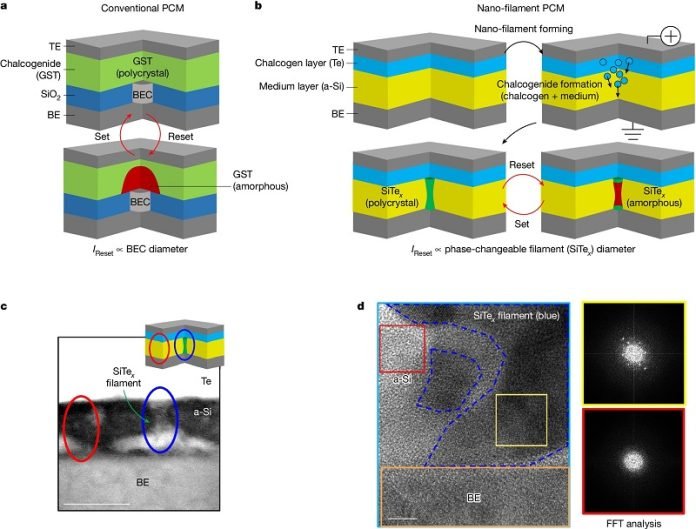
Imagine a memory device that’s not only incredibly fast but also uses very little power—sounds like something out of a sci-fi movie, right?
Well, thanks to a team of researchers in South Korea, this futuristic technology might soon become a reality.
They’ve developed a groundbreaking memory device that could revolutionize how we store and process data, making our computers and artificial intelligence systems much more efficient.
Led by Professor Shinhyun Choi from the KAIST School of Electrical Engineering, the team has created a new kind of memory device that could replace the ones we currently use, like DRAM and NAND flash memory.
Their invention, published in the journal Nature, promises to be a game-changer in the world of computing.
Traditional memory devices have their limitations. DRAM is super fast but loses data when the power is turned off, while NAND flash memory is slower but can keep data even without power.
The new memory device combines the best of both worlds—it’s fast like DRAM and retains data like NAND flash memory.
But what makes this memory device truly special is its ultra-low power consumption. Previous versions of similar devices required a lot of power to operate, making them impractical for large-scale use.
However, Professor Choi’s team found a way to make their memory device consume a whopping 15 times less power than before, without compromising on performance.
The secret lies in how they electrically form tiny filaments within the memory device. By doing this, they’ve created a memory device that’s not only efficient but also cost-effective to manufacture—a win-win situation for the future of computing.
Professor Choi is excited about the potential of their research. He believes that their memory device could pave the way for exciting new applications in electronic engineering, such as high-density three-dimensional vertical memory and neuromorphic computing systems.
This means we could soon see computers and AI systems that are not only faster but also much more energy-efficient, bringing us one step closer to a greener and smarter future.
With this breakthrough, the possibilities are endless. From faster smartphones to more powerful AI, the impact of this new memory device could be felt in every aspect of our lives.
It’s a testament to the power of innovation and the potential of science to shape the world for the better.



